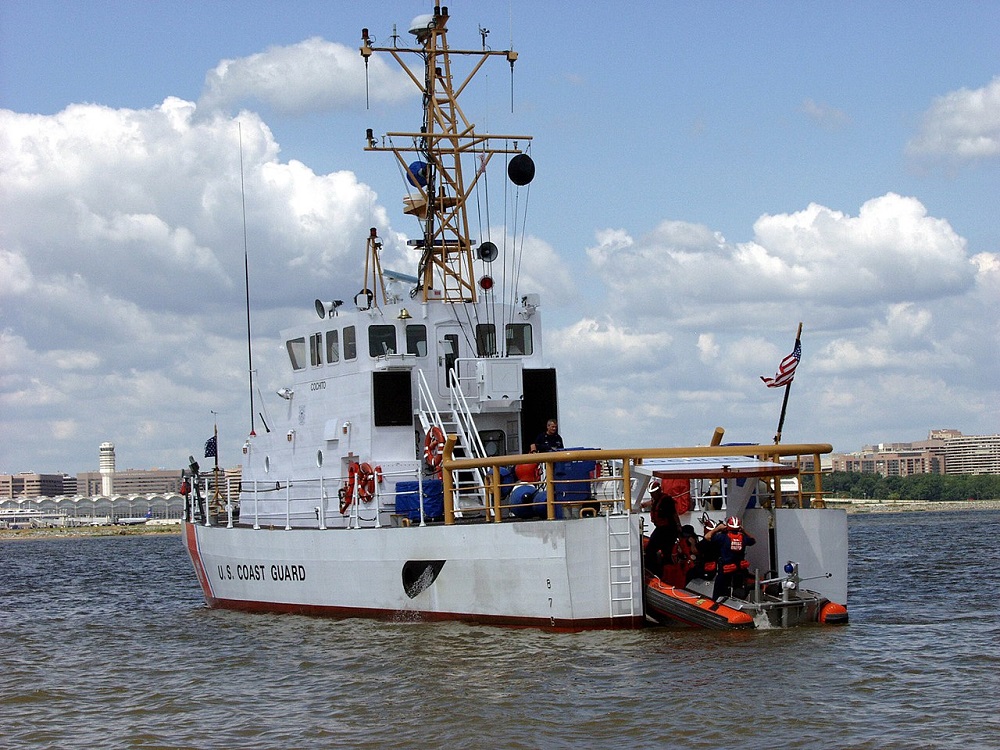In the US equipment package unveiled by the Prime Minister last week, there were also some systems that will be delivered to our country as EDA. Among them are three USCG Marine Protector coastal patrol boats.
These vessels were ordered by the US Coast Guard in 1999 at Bollinger Machine Shop & Shipyard Inc. Headquartered in Lockport, Louisiana, it has built a total of 75 boats and four more for customers overseas. Marine Protectors are currently being phased out by the USCG as newer, more capable Sentinel-class ships are brought into service. Bollinger Shipyards has been a major supplier of small and medium-sized ships to the U.S. Coast Guard since 1985, having built ships such as the Island, Marine Protector, Sentinel and Cyclone class for the USN and others.
The U.S. Coast Guard's 87-foot Marine Protector is tasked across the range of the U.S. Exclusive Economic Zone, from guarding and monitoring coastal waters and port facilities to combating smuggling and illegal immigration, protecting fisheries and supporting search and rescue missions out to 200 nautical miles. . It is a ship with a total length of 26.5 metres, a waterline length of 27.87 metres, a width of 5.92 metres, and a draft of 1.74 metres. Displacement is about 92 tons. The design is based on that of Damen's Stan 2600 and operates up to sea state 5. The general layout of the vessel is as follows: The vessel consists of a deck divided into three spaces. The aft part of the crew quarters is divided into cabins for four and two people, then follows the galley and dining area and finally from the middle and aft is the boat's engine room. The superstructure is divided into two levels. There are two cabins on the main deck, followed by the ship's office. On the second level is the bridge which has a 360 degree view. This particular ship set a new standard of living compared to older ships in service with the United States Coast Guard (USCG), as well as being able to accommodate mixed crews. The dining room can accommodate up to nine people, and for crew relaxation, in American service, has a TV, DVD player and DB sound system. Each cabin also has a separate sink and intercom phone while the boat has shared one-person toilets and showers on both levels. The boat crew consists of ten people while the boat can accommodate up to twelve people.

The vessel has two MTU 8V396 TE94 diesel main engines with a power of 1120 kW at 2000 rpm. Which drives two fixed five-blade propellers through ZF BW 255 reduction gearboxes. The boat has a maximum speed of 25 knots and a maximum radius of 900 nm. The maximum mission duration without resupply is three days. The propulsion system also includes low-speed cruising capability that allows the vessel to maneuver safely in confined waters as well as tow small vessels up to 200 tons displacement. Finally, it has two MAN DO824 LF01 generator sets with a VCM224F13 Stamford Newage generator of 60 kW each.
The fuel tank has a capacity of 10.6 cubic meters, the potable water tank has a capacity of 1,600 litres, and the gray water and sewage tanks are 200 and 1,500 litres, respectively. The boat also has the ability to produce drinking water through a reverse osmosis system.
Marine patrol electronics consist of an AN/SPS-73 ground-to-surface radar operating in the S/-X bands, as well as a full suite of electronics including: GPS, UHF/VHF/HF radios, The depth sounder, the Electronic Chart System (ECDIS) with more than 10,000 built-in maps covering most regions of the world, the INMARSAT system and the autopilot.

The ship's main armament consisted of two heavy 0.50-inch guns mounted to port and starboard bows covering a 240 degree arc. Finally, at the stern there is a ramp that can accommodate a high-speed inflatable boat (RIIB) up to five meters long, for reconnaissance and pursuit missions. The loading and unloading system is operated by one person and has the ability to collect the blow intact even in strong waves.





More Stories
F-16 crashes in Ukraine – pilot dies due to his own error
Namibia plans to kill more than 700 wild animals to feed starving population
Endurance test for EU-Turkey relations and Ankara with Greece and Cyprus